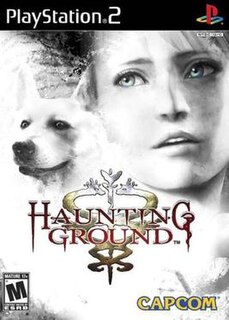 W
WClock Tower is a survival horror point-and-click adventure video game series created by Hifumi Kono. The series includes four games in total. The first entry, Clock Tower (1995), was developed by Human Entertainment and released on the Super Famicom exclusively in Japan. Human Entertainment developed two more entries, Clock Tower (1996) and Clock Tower II: The Struggle Within (1998), which were released on the PlayStation and localized outside Japan. The fourth and most recent title, Clock Tower 3 (2002), was co-produced by Capcom and Sunsoft for the PlayStation 2. Gameplay in the series generally involves the player hiding and escaping from enemy pursuers without any weapons to defeat them. Scissorman is a reoccurring antagonist and sometimes the sole enemy in the game.
 W
WClock Tower is a survival horror point-and-click adventure game developed and published by Human Entertainment for the Super Famicom in 1995. It is the first installment in the Clock Tower series. The story follows orphan Jennifer Simpson soon after she is adopted by the Barrows family along with other orphaned girls. Shortly after arriving at the Barrows family manor, one of the other children is killed by a stalker called Scissorman. Jennifer must then explore the Barrows Mansion to find a way to escape while evading Scissorman, leading to one of the game's multiple endings. Clock Tower utilizes a point and click interface with the player controlling a cursor to direct Jennifer's actions.
 W
WClock Tower, known in Japan as Clock Tower 2, is a survival horror point-and-click adventure game developed by Human Entertainment and released for the PlayStation in 1996. It is the second game in the Clock Tower series after the original Clock Tower, which was released exclusively in Japan for the Super Famicom one year prior. The story takes place in Norway and follows a variety of characters as they attempt to survive the return of Scissorman and uncover the mystery of his seemingly immortal state. The scenarios encountered and endings vary widely based upon the player's actions.
 W
WClock Tower II: The Struggle Within, known in Japan as Clock Tower: Ghost Head, is a horror-themed adventure game developed by Human Entertainment and released for the PlayStation in 1998. It is the third game in the Clock Tower series. The story follows 17-year-old Alyssa Hale who occasionally is possessed by an alter ego named Mr. Bates. The player must guide Alyssa through various environments, altering between her normal and twisted personality, to uncover the secrets of her and her family's past.
 W
WClock Tower 3 is a survival horror video game co-produced by Capcom and Sunsoft for the PlayStation 2. Released in 2002, it is the fourth installment in the Clock Tower series, and the first and only video game directed by Japanese film director Kinji Fukasaku. The plot and characters have very little relation with the previous Clock Tower games. The story follows 14-year-old Alyssa Hamilton who is part of a family lineage of female warriors who travel through time to defeat evil spirits. Alyssa travels from her time in 2003 London to the 1940s and 1960s in order to defeat these "Entities" and bring peace to troubled souls.
 W
WHaunting Ground, known in Japan as Demento, is a survival horror video game developed and published by Capcom for the PlayStation 2 in 2005. The story follows Fiona Belli, a young woman who wakes up in the dungeon of a castle after being involved in a car accident. She quickly befriends a White Shepherd, Hewie, and begins to explore the castle with his aid to seek a means of escape and unravel the mysteries of it and its inhabitants. The game shares many similarities with Capcom's earlier survival horror title Clock Tower 3 (2002), and has been described as a spiritual successor to the Clock Tower series.
 W
WNightCry is a graphic adventure survival horror video game developed by Nude Maker and published by Playism Games. NightCry is directed and written by Clock Tower series creator Hifumi Kono, and is considered a spiritual successor to the series. It was first released for Windows in March 2016, and later for the PlayStation Vita in January 2019. Ports for Android and iOS were also planned, but never released.